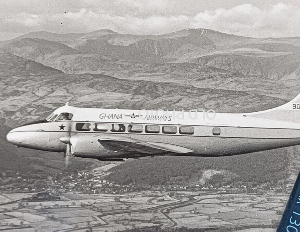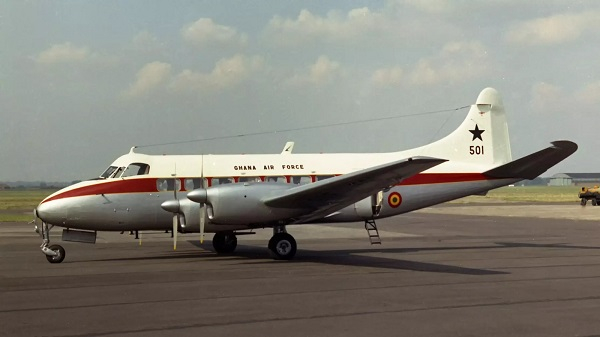See the first state-acquired aircraft in Ghana

This aircraft, the first registered in Ghana’s post-independence era, symbolised the country’s entry into regional air travel, primarily serving routes within West Africa.
The De Havilland Heron represented both national pride and Ghana’s early ambitions for an independent airline industry, establishing Ghana Airways as a key player in West African aviation during its formative years.
The De Havilland Aircraft Company DH114 Heron was a four-engined, short- and medium-range commercial airliner, also used as a military communications aircraft and executive transport.
The aircraft was essentially an enlarged version of the De Havilland DH104 Dove, powered by four Gipsy Queen 30 engines.
The Heron was widely used by various nations, including the Ghana Air Force, which operated a DH114 Heron 2.
In that same year, 1958, Ghana Airways became the national carrier through a joint venture between the government of Ghana, which held a 60% stake, and the British Overseas Aircraft Corporation (BOAC), holding the remaining 40%.
Operating from its primary hub at Kotoka International Airport, Ghana Airways signed a seven-year agreement with BOAC.
Initially, BOAC staff operated the airline while some Ghanaian personnel were sent to London for training.
Over the years, Ghana Airways proudly carried the Ghanaian flag on its wings, and flying with the airline became a prestigious experience.
The airline eventually expanded, acquiring two Boeing 707-420s and three Vickers VC10s to operate flights to the United States, along with routes to Sydney, Australia, and Tokyo, Japan.
However, financial difficulties began to surface in the early 2000s as demand for flights increased, and Ghana Airways struggled to compete with emerging private carriers employing innovative business models.
These challenges, combined with rising operational costs, led to the airline’s eventual collapse.

See the image below as shared by @GyapKay on X:





